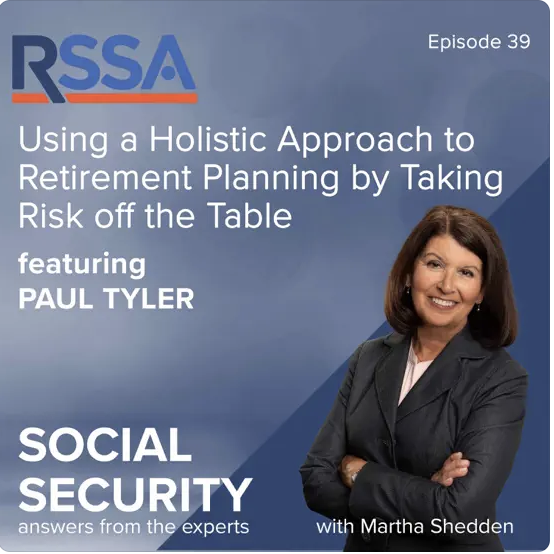By Christopher Carosa
Finance is hard. It’s harder if you’ve never learned about it. Chances are if you’re an adult you’ve had precious little in terms of financial literacy training. In fact, the most exposure you’ve had might probably be at your regular 401k employee meeting. That likely isn’t the ideal environment to learn.
“In adult learning, we say that adults learn what they want to learn when they want to learn it,” says Jay Zigmont, Founder of Live, Learn, Plan in Water Valley, Mississippi. “The best chance we have to help adults to change is to have resources ready for them when they need them. Adults want to learn when they are going through or preparing for some transition or life event. For example, when they are starting a job there may be an opportunity for them to learn about benefits and the impact on their financial plan.”
Certainly, having new hires sit down and learn about company benefits is standard fare for the company onboarding process. But doesn’t this also represent an opportunity to think outside the box? Because a new job often suggests a major change in one’s life, the onboarding experience can be redesigned to address employee needs beyond the walls of the conference room.
Paul Tyler, CMO at Nassau Financial Group in Hartford, Connecticut, says, “We’re often guilty of creating too much art for ourselves. Unfortunately, many tools and books are written by and for the already-financially literate population. We, as an industry, need to listen harder to the real financial problems faced by those with little knowledge and large needs. And then we must rethink the tools we build that will help deliver relevant solutions for them.”
“Employers and retirement plan sponsors should provide more holistic financial education resources as opposed to content that is singular in focus on retirement planning only,” says Courtney Hale, Chief Hope Dealer at Super Money Kids Co. in Nashville, Tennessee. “It’s really difficult to adequately contribute to retirement when you are buried by student loans and paying for daycare in a city with a high cost of living. Our monthly budget impacts how much we are able to contribute to retirement. Our debt repayment plan impacts our budget which impacts how much we are able to contribute to retirement and so forth. There needs to be more emphasis on how these things can work together for a more prosperous future.”
Still, the very mechanism of delivery may be faulty.
“Employers have the administrator of their company 401k plan provide seminars,” says Havis T. Bardouille of Bardouille Financial and host of the Tuesdays with Terrence Financial Insights Podcast in Lancaster, South Carolina. “But just because they offer them, does not mean their employees understand them fully. They can follow up with ongoing series, workshops, or resource documents. Mailers and social media campaigns are great options too for adults who are more private and may not want to attend a public gathering to alert others that they lack financial knowledge. Adults learning financial literacy need to be taught more strategically and customized for their later stages in life to take away the difficulty of the task. They need long-term tailor-made plans, but also, quick tips that are valuable and strategic, that can reveal results quickly.”
One of the most cost-effective methods for addressing the challenges of employee financial literacy training is video.
“Video gives people the most amount of information in the shortest amount of time,” says Robert Weiss, President of MultiVision Digital in New York City, who has produced over 1,000 videos over the past 11 years, many of them on the subject of money. “When busy people go to learn, they seek video first. Video tells as opposed to having them read and figure things out. Video is easy to rewatch and share versus re-read.”
In addition to offering the advantage of privacy, videos have no bounds of use. It’s been around for a while, but NetFlix et al have made ‘binge-watching’ a social norm. Is this habit about to trickle down into 401k education and financial literacy in general?
“Employees can access the videos on their own time when they’re most able to absorb the information,” says Shawn Plummer, CEO of The Annuity Expert in Atlanta, Georgia. “What’s more, many of the concepts can be hard to grasp at first, but with rewatching, closed captions, and transcripts, the information absorption becomes easier.”
Imagine what you do when you want to learn how to fix something in your house that you’ve never fixed before. You look it up on the internet and read how to do it. After going through a few articles and still not confident you know enough, you through in the towel and play a video that shows you how to do it.
This works for what ever appliance, yard tool, or stingy stain you need answers on. And it’s right there at your figure tips whenever you need it. Wouldn’t it be great to find financial solutions the same way?
“For especially dense topics, videos are a way to make personal finance content more engaging and easier to understand,” says Gabi Slemer, CEO & founder of Finasana in Fort Lauderdale, Florida. “A video library can also be tailored to individuals’ interests and needs so that they can watch only the topics that interest them and therefore are more likely to be fully engaged than during a traditional meeting.”
To be truly effective, 401k plan sponsors can’t rely on just one generic video. You need a fairly comprehensive selection to address the variety of needs out there. You never know when someone has a desire to learn something. An extensive array of short videos covering narrow topics provides an efficient way for employees to gain more satisfaction with the benefits package offered by the company.
“Online video libraries give adults time to process the information,” says Jerry Han, CMO of PrizeRebel in Los Angeles, California. “Assignments and application sessions are highly personal, and many adults don’t have the time to do them immediately. Online video libraries give them time to process the information. The e-learning experience becomes much more effective when adults can set aside a 20-minute session for learning. In-person education meetings are usually given in lecture form, not giving students the time to truly dig into the information. In-person 401k educational meetings don’t give adults preferential times for learning. That usually means adults suffer from fatigue and don’t understand difficult material when given in large doses.”
And going back to that household repair process, where you really take your time before acting, financial videos can give employees the confidence – and the time – to make those important financial decisions.
“401k videos can provide real-life applications and connect to e-learning activities,” says Stewart Dunlop, Founder of LinkBuilder in Edinburgh, Scotland. “Traditional in-person training often doesn’t go into depth. Videos allow for tangents, for moving into directions most in-person training can’t due to time constraints.”
Now that you understand the value of video, you’re probably wondering about some of the more practical aspects of the medium. For example, how long should videos be? Here, you’ll find answers from across the spectrum.
Slemer says, “3 to 5 minutes, consistent with adult learning principles. Shorter videos are better at keeping attention spans and allowing individuals to process one topic at a time and fully grasp it before moving on to the next. Ideally, a library with sequential videos that cover micro topics one at a time.”
Han, on the other hand, says, “20-minute videos are the best length. Humans generally struggle to focus after 25 minutes, so retaining optimal focus during education settings gives them the time to fully devote themselves to learning. Breaking those videos into chapters and sessions is also helpful. If adults only have a short time to learn, they can always refer back to chapters within videos to pick up where they left off.”
In the spirit of not-too-hot/not-too-cold, Plummer says, “Try to stick to the 10-15 minute mark. You’ll notice that most online courses follow this rule of thumb as well. It’s a standard across information genres.”
But Weiss provides the answer you’d expect from a film producer. He says it “depends on the content at hand. There is no rule aside from ‘never make a video longer than it has to be.’”
The next most important question is how do you arrange the material. Even though videos can be short and focus only on one small topic, that doesn’t mean they can’t be sorted into broader categories.
“When it comes to financial literacy topics,” says Slemer, “there are three basic rules that make up overall financial planning: (1) save money, (2) avoid (or get out of) bad debt, and (3) invest for the future. Of course, each of these topics can be further broken down into greater detail to be fully explained, which is where a video series comes in!”
You’ll probably want to find the right talent for the videos you offer. That doesn’t mean you’ll be making the videos. Someone else will. You just want to know about the folks creating that content. After all, just because you can do an internet search for financial literacy videos doesn’t mean the advice and lessons offered in those videos are sound.
“The challenge right now is that the primary resource people use when they want to learn may be the Internet,” says Zigmont. “The Internet allows you to have information at your fingertips, but without context. The result for many people is that they end up trying to solve each problem with whatever is popular that day, resulting in a financial plan that is disjointed and not heading towards their goals.”
Although it’s good to have some entertainment value in these videos, don’t lose sight of their real purpose.
“Videos need to be relatable enough that users will benefit from them,” says Slemer. “However, relatability is not a substitution for education and knowledge. You should always ask questions about the creators’ background: why are they giving me financial advice, are they qualified to do so (and if so, by whom?), and why should I trust them? If you can’t answer these questions, I would strongly suggest fact-checking the information you get with more reputable sources!”
One obvious/not-so-obvious choice is people who teach for a living.
“Financial educators should make the videos,” says Dunlop. “Professors in finance understand the basics of retirement contribution law. Because most financial educators have experience in online courses (due to COVID), they can provide a solid outline. Professionals within the 401k sphere. They can answer questions regarding fees, the best financial options for 401k support, and how to create your own should you work for yourself.”
How can you be sure your video library is accessible to your employees? Are these videos better delivered on an open platform like YouTube or behind an “employees” company website?
“If you’re making your own videos for a limited audience (employees, namely), then keep them on your own platform,” says Plummer. “YouTube gives you a lot of data on your viewers, which isn’t useful information if you’re not trying to build an audience. You can keep the videos on YouTube unlisted if you need to use their platform.”
It’s generally easier to control how videos are stored on the “library shelf” if you use the company website. Already YouTube does allow for something similar to this, navigating their platform requires a certain level of internet familiarity and intuition. This isn’t something you can count on among every single employee.
“The benefit of an open platform like YouTube is that the content is widely available and accessible to everyone,” says Slemer. “The detriment, however, is that by its very nature the content ends up being viewed as a one-off and not part of a sequence, which can be harmful to overall comprehension and understanding because it then becomes difficult to conceptualize as part of a greater topic.”
Finally, it’s important to remember no single method of delivery is foolproof. They all have shortcomings, including video. The bigger question is how to overcome these shortcomings (if you can).
“When you create mass content via any delivery method (such as videos), you’re generally creating content for the lowest common denominator within your target audience,” says Slemer. “As a huge proponent of eliminating jargon and answering the ‘stupid’ questions that are on everyone’s mind, I find videos to be a huge advantage to help level the playing field. Having said that, this means that the content can be quite generalized, and people may feel that it isn’t specific enough to their situation, which can be mitigated by ancillary offerings, such as 1×1 guidance or Q&A.”
That lack of live talent is the major drawback of videos.
“Videos don’t offer immediate support,” says Han. “If you have questions, teachers can’t immediately answer them. Only 48% of people believe that e-learning is as effective as online learning, mostly because they can’t ask questions. Provide FAQ sections for every section. Assign someone with no experience to go through the video and answer their questions in a FAQ section. The more people you ask, the more in-depth your course becomes.”
Oddly enough, while the lack of a live teacher presents one problem, the lack of a live audience provides another.
“On the other end of the spectrum,” says Slemer, “it’s also incredibly easy to fall prey to the ‘curse of knowledge,’ especially when you don’t have a captive audience giving you live feedback and asking questions. The curse of knowledge is a cognitive bias that occurs when you unknowingly assume that others have the background to understand the information you are conveying (enter: ‘jargon’). You overcome this by creating a community and tailoring your videos to their needs.”
In a few years, employee 401k education meetings might be a thing of the past. In the future, it’ll be all about those weekend 401k education binge parties.
Break out the popcorn!
See the article on FiduciaryNews.com: https://fiduciarynews.com/2022/04/401k-education-without-walls-and-beyond-boundaries/
 That Annuity Show
That Annuity Show




















Recent Comments